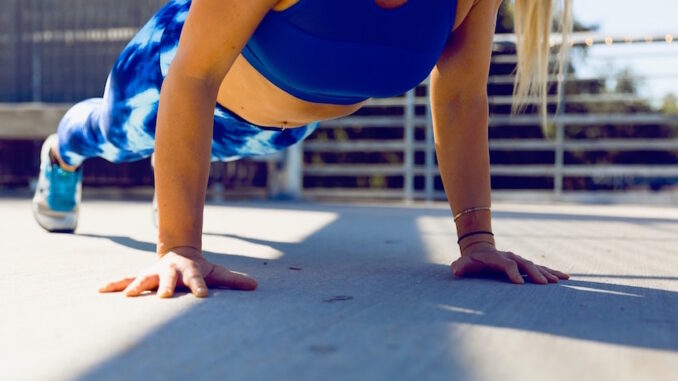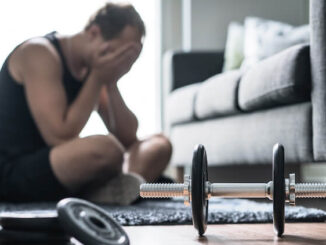
Getting a new piercing is an exciting way to express yourself, but it also has a healing period that requires special care—especially if you’re active. Whether running in Oregon’s beautiful landscapes, biking around Washington’s scenic trails, or training for the upcoming Portland Marathon, it’s important to ensure that your new piercing heals properly without affecting your workout routine.
Here’s how to stay active while making sure your new piercing doesn’t become a painful distraction or, worse, lead to complications
1. Understanding the Healing Process
Before diving into workout modifications, it’s essential to understand the healing process for piercings. Different types of piercings heal at different rates. For example:
- Earlobe Piercings typically take about six to eight weeks to heal.
- Cartilage Piercings (including the nose or upper ear) can take three to 12 months.
- Body Piercings (such as the nipple or navel) can take longer—around six to 12 months for complete healing.
During this period, the skin around the piercing is still vulnerable, so activities that cause friction, sweating, or pressure can hinder healing. Tailoring your workouts to avoid irritation around the piercing area is essential.
2. Avoiding Direct Contact and Friction
One of the biggest risks to a new piercing is irritation caused by friction, which can delay dealing or lead to infection. If you plan on doing physical activities, ensure your piercing isn’t rubbing against your workout gear.
- For ear piercings, avoid wearing tight hats, helmets, or headphones that press against your ears. Instead, opt for loose-fitting gear or find ways to adjust them so they don’t touch the piercing.
- Choose breathable, loose clothing that won’t rub against your skin for body piercings. Tight sports bras, tank tops, or highwasted leggings can irritate a fresh piercing in areas like the navel or nipple.
- For facial piercings, be cautious with sweatbands, sunglasses, or goggles that might press on piercings like your nose or eyebrow.
If your workout involves wearing helmets or gloves (especially for biking), ensure you don’t put pressure on newly pierced areas.
3. Keeping the Piercing Clean, Especially After Workouts
Sweating is a natural part of working out, but it can introduce bacteria into your fresh piercing and increase the risk of infection. If you’re innately active, your piercing is likely to be exposed to dust., sweat, and dirt.
After Every Workout
- Clean your piercing using a saline solution (avoid alcohol or hydrogen peroxide, as they can irritate the skin).
- Gently pat the area dry with a clean cloth or paper towel. Avoid rubbing the piercing, as it can cause irritation.
- If your piercing is on your face, neck, or upper body, and you’ve been sweating heavily, consider washing the entire area with a mild soap to ensure bacteria doesn’t spread.
4. Modifying Your Workout as Needed
Depending on where your piercing is located, you may need to adjust your workout routine temporarily. Training without compromising the healing process is vital if you’re preparing for a sports event.
Running and Hiking
If you have a piercing in a high-contact area (like the belly button or nipple), running and hiking can cause constant movement that might irritate the piercing. Consider starting with shorter runs or walks and gradually building distance as your piercing heals.
Strength Training
Avoid exercise that puts pressure on or near your piercing. For example, if you have a chest or nipple piercing, avoid chest presses or pushups until the area is healed. Opt for exercises like squats or leg presses instead of crunches for navel piercings.
Yoga and Stretching
While yoga and stretching are low-impact workouts, certain positions can press against your new piercing. Be mindful of discomfort and adjust your practice to avoid pressure on healing areas.
Keep in mind that fitness trends and best workout practices are constantly evolving. To stay informed and discover workout routines that align with both your lifestyle and your healing needs, make it a habit to read the latest sports and fitness news.
5. Being Extra Cautious with Water Sports
Swimming, whether in a pool, lake, or ocean, can introduce bacteria to your new piercing, especially when healing. Access to countless beautiful lakes and rivers in the Pacific Northwest makes it tempting to cool off with a swim after a long hike or run. However, holding off until your piercing is fully healed is important.
If You Must Swim
- Protect the piercing with a waterproof bandage to minimize exposure.
- Clean the piercing thoroughly with saline after getting out of the water.
Note: Even if you’re not swimming, be cautious of moisture buildup from sweat, rain, or humidity, and always clean the piercing afterward.
6. Planning for Sports Events
If you’re training for upcoming sports events like the Portland Marathon, timing your piercing is essential. With the marathon in early October, getting a piercing too close to the event might make training uncomfortable or increase the risk of irritation during the race.
- If you’re planning on a new piercing, it’s best to do it well in advance of the marathon to allow ample healing time.
- If you’ve recently gotten a piercing and still want to run, consider applying protective covers or bandages over the area to prevent friction from your running gear.
Since running long distances can cause sweat to build up around your body, make sure you take extra care to clean your piercings immediately after you run, especially during your marathon training.
7. Listen to Your Body
Your body is healing, and adding physical activity to the mix can sometimes slow it down if you’re not careful. Pay attention to any signs that your piercing isn’t healing as it should.
Signs of Irritation Include
- Redness and swelling that doesn’t go down after a few days
- Sharp pain or discomfort during workouts
- Pus or other discharge from the piercing site
If you notice any of these symptoms, it’s important to consult a professional piercer or healthcare provider. Sometimes, you may need to stop working out until your piercing heals properly temporarily.
Conclusion
You don’t have to put your workouts on hold if you’ve recently gotten a new piercing. It’s important to be mindful of how your piercing is healing and adjust your routine accordingly. With proper care, minor modifications, and a focus on cleanliness, you can continue enjoying your active lifestyle without compromising your piercing’s healing process. By listening to your body and taking the necessary precautions, you and your new piercing will be in top form for all the adventures the Pacific Northwest offers.



